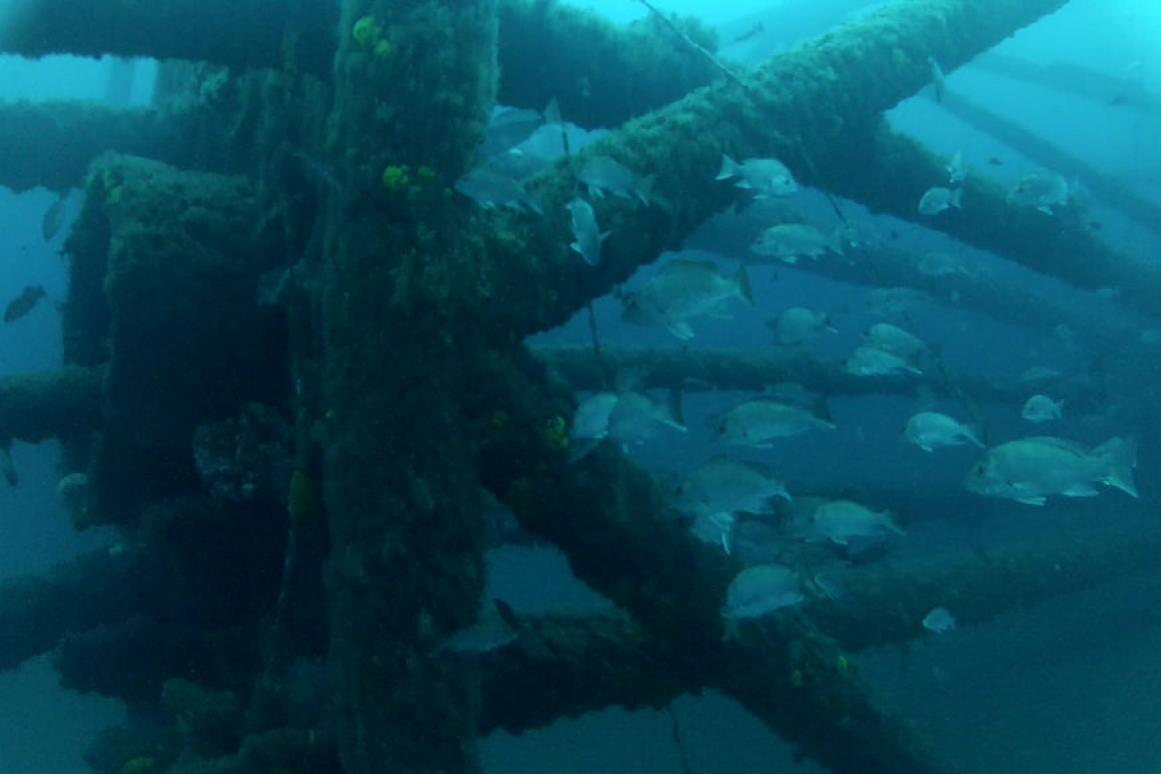How Many Red Snapper Are In The Gulf? HRI leads an All-Star Study to Find Out

HOW MANY RED SNAPPER ARE IN THE GULF?
The Harte Research Institute will lead an all-star team of the Gulf’s top fish scientists in a $12 million project to find out.
CORPUS CHRISTI, Texas — Scientists from the Harte Research Institute for Gulf of Mexico Studies (HRI) at Texas A&M University-Corpus Christi have received one of the largest fisheries research grants ever awarded to lead a monumental undertaking: Estimating the number of highly-sought after red snapper in the U.S. waters of the Gulf of Mexico, one of the most controversial fisheries in the world.
The institute will lead a “dream team” of fishery scientists from the Gulf and beyond for a two-year independent red snapper study, bringing together 21 scientists from 12 institutions of higher learning, a state agency and a federal agency, said HRI Endowed Chair for Fisheries and Ocean Health and Center for Sportfish Science and Conservation Director Dr. Greg Stunz, who is leading the project. HRI was awarded $9.5 million in federal funds for the project through a competitive research grant process. With matching funds from the universities, the project will total $12 million.
“This is the largest fishery grant ever awarded to a research group, and one of the largest research grants taken on by Texas A&M University-Corpus Christi,” said TAMU-CC President and CEO Dr. Kelly Quintanilla. “We’re proud to have our very talented fisheries scientists at HRI leading this tremendous effort to address challenging research questions about an iconic Gulf species.”
Red snapper is one of the most highly-targeted and controversial sportfish in the northern Gulf. Sought after by both recreational and commercial fishermen, the species has been considered overfished since the 1980s, and anglers have seen a dramatic reduction in both the fishing season and bag limits in recent decades. But while the stock has been officially classified as overfished, the population is exploding, with fishermen are catching more red snapper than ever in places they have not occurred since the 1800s. The discrepancy between on-the-water observations and current assessments have led to mistrust in the data and heated conflicts in the fishery.
In response to the concerns of fishermen and Gulf stakeholders, in 2016 these issues were elevated to Congressional levels, where lawmakers directed the National Sea Grant College Program and NOAA Fisheries to fund independent red snapper data collections, surveys and assessments, including the use of tagging and advanced sampling technologies to solve this pressing fisheries management problem. Mississippi-Alabama Sea Grant was chosen to administer the competitive research grant process and manage this independent abundance estimate.
“Red snapper is one of the most contentiously managed species in the world. Congress mandates that we manage fisheries based on the best science available, but we often do not have the essential data needed to make informed decisions, and that is true for Red Snapper” Stunz said. “If we can reduce the uncertainty surrounding the populations size by gathering more data on how many fish are available, we can make better decisions regarding the fishery’s future and manage it in the most efficient way.”
No one knows exactly how many red snapper are in the Gulf of Mexico. The fishery is managed on a relative measure of the population abundance that fisheries managers estimate each year to set seasons and limits. However, there have been questions about how accurate that method is due to the size of the Gulf and its diversity of habitats. In addition, red snapper presence on the abundant artificial reefs and uncharacterized natural bottom in the northern and western Gulf is largely unknown. Researchers have been called on specifically to address red snapper numbers on these habitats.
Through state-of-the-art ROV, acoustic and camera-based surveys, traditional sampling, tagging, and other fieldwork the independent team will determine the abundance and distribution of red snapper on artificial, natural and unknown bottom habitat across the northern Gulf of Mexico. The project will also engage recreational and commercial fishermen in a citizen science initiative, including them in the data collection process through tagging, cooperatively carrying on the research from their own vessels, and other innovative partnerships.
“We’re proud that the Harte Research Institute at Texas A&M University-Corpus Christi has been tasked with developing the data to solve the problems facing Red Snapper fishing in the gulf,” said U.S. Rep. Blake Farenthold, R-Texas. “This is a complex issue that should be addressed by the best red snapper scientists in the country, and I am anxiously awaiting the Harte Research Institute’s findings.”
Estimating the abundance of red snapper over a large, diverse sea like the Gulf of Mexico is extraordinarily complex, and that is why leading fisheries scientists from research facilities across the five Gulf states were gathered to help conduct the study. Each is the top expert in their respective regions, recognize the magnitude of the problem, and are willing to take on this challenging endeavor, Stunz said.
Scientists on the team include:
- Greg Stunz, Harte Research Institute for Gulf of Mexico Studies, Texas A&M University-Corpus Christi
- Will Patterson, University of Florida
- Sean P. Powers, University of South Alabama, Dauphin Island Sea Lab
- James Cowan, Louisiana State University
- Jay R. Rooker, Texas A&M University at Galveston
- Robert Ahrens, University of Florida, Fisheries and Aquatic Sciences
- Kevin Boswell, Florida International University
- Matthew Campbell, NOAA Fisheries (non-compensated collaborator)
- Matthew Catalano, Auburn University
- Marcus Drymon, Mississippi State University
- Brett Falterman, Louisiana Department of Wildlife and Fisheries
- John Hoenig, College of William and Mary, Virginia Institute of Marine Science
- Matthew Lauretta, NOAA Fisheries (non-compensated collaborator)
- Robert Leaf, University of Southern Mississippi
- Vincent Lecours, University of Florida
- Steven Murawski, University of South Florida
- David Portnoy, Texas A&M University-Corpus Christi
- Eric Saillant, University of Southern Mississippi
- Lynne S. Stokes, Southern Methodist University
- John Walter, NOAA Fisheries (non-compensated collaborator)
- David Wells, Texas A&M University at Galveston
